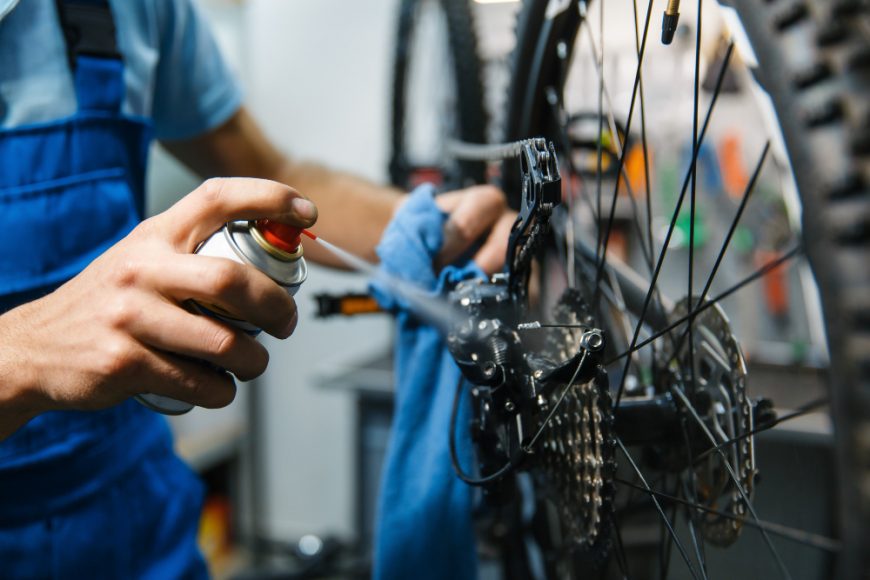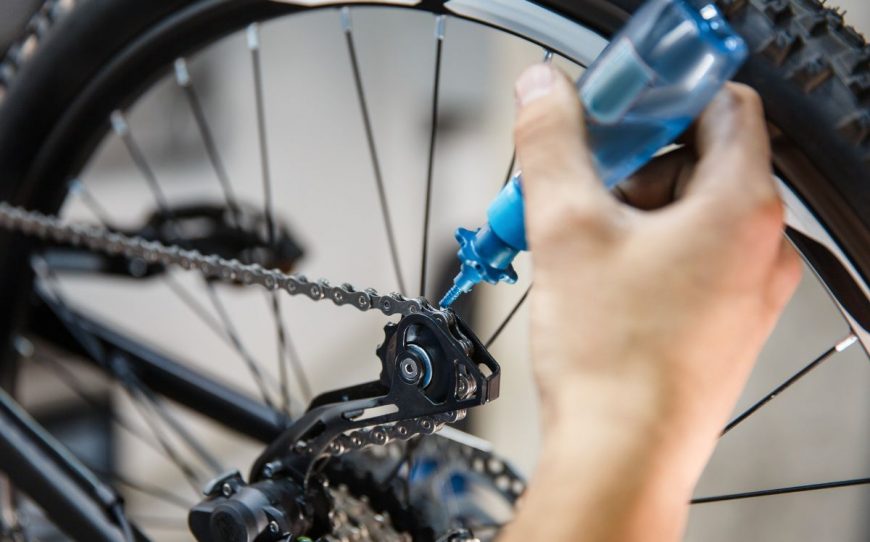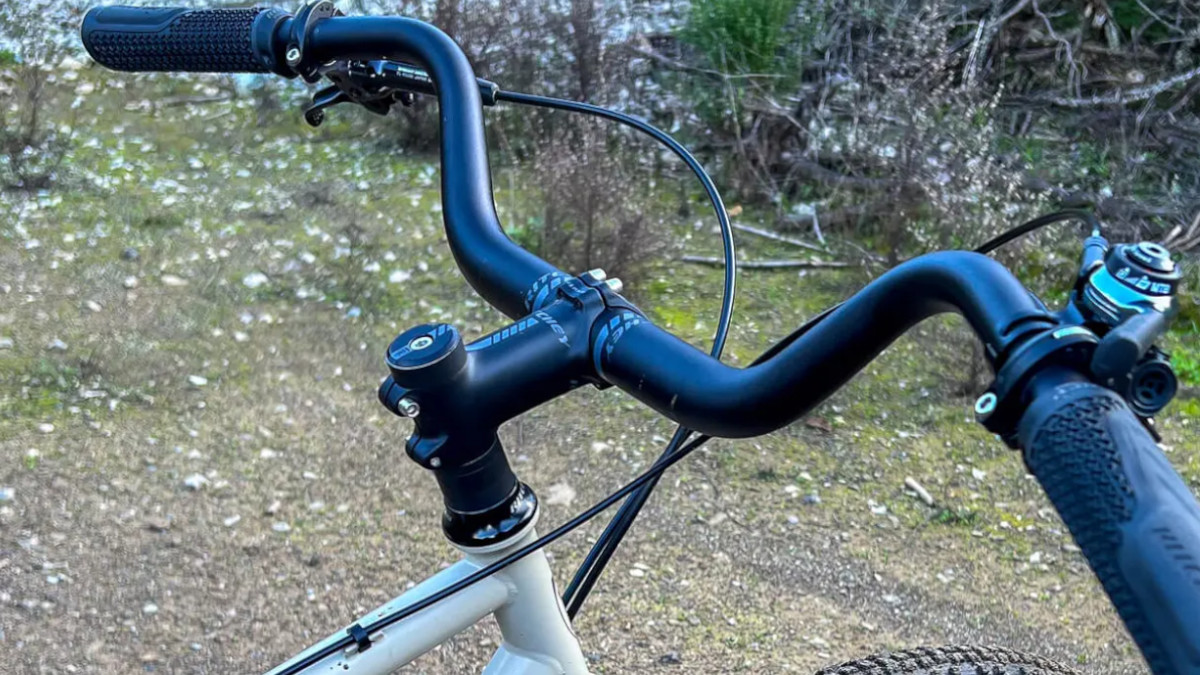The bike chain is one of the most useful parts of a bicycle. It grinds hard to transfer our foot power to the rear wheel to get your cycling going. But it is also one of the most ignored parts when it comes to bicycle maintenance. Since it is in constant use, it depreciates quickly. Especially when exposed to extreme conditions. The wear and tear leads to changing it several times which can be costly!
But here’s the good news, you can avoid this cost by investing in a good chain lube. Now you might be thinking why do I need a chain lube when I can just grease it and let it roll? I am glad you asked. Well, a lube will make your bike perform more efficiently. It will also help save up some of the cash that you were going to use to replace the chain. A good chain lube will elongate your chain’s lifespan. Now this is where it gets a bit tricky. If you apply lube to a worn-out chain, it will damage your chainrings and cassette. Your replacement cost might also go up.
So today, along with sharing with you why you need a bike lube, I will also provide insight on the different types that you can get. Isn’t that two good things at the price of none?
Why Do You Need A Bike Lube?

“Do I really need a bike lube?” The answer, in a single word, is Yes! Bike chain lube makes the engaging process of the chain with the cassette sprockets and the chainrings smooth. It may be a time-consuming process, depending on the type of lube you choose and the condition of your chainring, but it is worth the work
Here are some of the benefits you get while using a bike chain lube:
- Using a chain lube reduces the threat of a bike chain failing prematurely.
- When you ride a bike, your chain is most exposed to dirt and debris. A chain lube works as a protective coating.
- It extends the life of the chain by minimizing wear and tear.
- It protects your chain from rusting.
- It minimizes the grinding between the sprocket and the chain. Hence, lowering the stretch.
- A good lube will smooth the connection of the chain with the chainrings.
- It minimizes chain friction.
- It will also help reduce any chain noise.
- It extends the life of the chain to a great extent, hence saving money.
- A chain lube will not only protect the “O” and “X” rings but also provide them with an extra barrier.
Rusty bike chain? No problem! Our guide will show you how to remove rust from your bike chain. Check it out now!
Risks Involved With Using Bike-Chain Lube
There are some potential risks involved in using a bike chain lube.
- Some lubes contain toxic materials. Breathing them can cause health problems. You might also experience skin irritation if you come in contact with them.
- If you use a spray-on lube, there is a chance you might contaminate your rotors and brakes as well. This will affect the performance of your brake.
- One important step after using a bike lube is to wipe off any excessive lube. If you do not do that, you will be getting a lot of dust and dirt. This combined with the lube will make a sort of paste that will grind your chain and sprocket.
- If you do not clean your chain before applying the new layer of the bike lube, you will be just rubbing the same dirt over and over again on your chain. This will make you lose any potential advantages of the lube. Check out our guide on how to clean the bike chain to learn the correct method.
Rusty bike chain? No problem! Our guide will show you how to remove rust from your bike chain. Check it out now!
How To Correctly Apply A Bike Chain Lube
If you correctly apply the bike chain lube, you can avoid these potential damages. The trick is to know what you are doing!
- Select a lube according to your riding conditions. I have made a table below which can help you find the right type of lube for you.
- Remove your bike chain. Clean it thoroughly. You can use a degreaser, a brush, and a clean rag. Read our review on the best bike chain degreasers to choose the best one according to your budget.
- Take a clean rag and dry the chain.
- Now take a small amount of lube and apply it to your chain links.
- Wipe off any excessive lube.
- Re-install your chain.
If you do not feel the need to remove the bike chain, you can lube it while it is still installed. Just apply a small amount of lube on the links of your chain and turn the pedals backward slowly. Keep pedaling so that the lube penetrates evenly.
Learn how to reinstall your bike chain with our detailed guide!
Types Of Lubes For Different Types Of Ridding Conditions
| Type | Riding Conditions | Options | Price ($) |
|---|---|---|---|
| Wet Lube | Wet and Muddy | Squirt Lube | 15-20 |
| Dry Lube | Dry and Dusty | Dumonde Tech Pro Dry Lube | 10-15 |
| Wax Lube | All Conditions | Silca Super Secret Chain Lube | 25-30 |
| All-Weather Lube | All Conditions | Tri-Flow Superior Dry Lube | 5-10 |
| Ceramic Lube | All Conditions | Muc-Off C3 Dry Ceramic Lube | 15-20 |
Pros And Cons Of Different Types Of Lubes

There are different lubes made by different companies available in the market but they all stem from some basic types, which are:
- Wet Lube
- Dry Lube
- Ceramic Lube
- Wax Lube
1. Wet Lube
This type of lube is best suited in wet conditions or cat-and-dog weather. It was launched as a higher-quality oil but ended up replacing it. However, this one is also considered to be an all-weather one. It has a thick density and is best for UK-based cyclists.
Types
- Fenwicks Wet Weather Chain Lube.
- Finish Line Wet Chain Lubricant
Advantages
- It is the most long-lasting.
- Due to its thick density, it does not need to be applied more frequently.
- It is an amazing water repellant. Hence saving your bike chain from many problems like rusting etc.
- It does not wash away so easily.
- It does not lose its texture and remains wet until it is time to re-apply the lube.
- It is a practical option for daily bike commuters.
Disadvantages
- Due to its sticky texture, it invites more dirt and debris which gets stuck in the chain.
- The lube mixes with the dirt and a grainy past is created which grates the chain.
- If the lube is left out for a long time, it thickens. Hence, affecting the drivetrain.
- If you do not maintain it properly, the lube can cause severe damage to your chain.
- The chain needs to be completely cleaned first before reapplying the lube.
- The chain needs to be completely degreased which is a time-consuming task if it needs to be done more frequently.
2. Dry Lube
Dry chain lube was introduced to tone down the disadvantages of wet lube as it is a newer invention. It has quickly gained popularity among the masses. The lube was invented to reduce the risk of clogging the bike chain. It is best suited for dry weather.
Types
- Finish Line Wet Chain Lubricant
- White Lightning Clean Ride Chain Lube
- Green Oil Wet Lube.
Advantages
- It is thin in density as compared to wet lube. Hence, it can be applied easily.
- It does not attract dirt and debris.
- You can easily apply it because you do not need to clean the chain every time before reapplying.
- It is not as messy as wet lube.
- It is not very high maintenance.
- It is easy to use.
Disadvantages
- It is not as long-lasting as compared to wet lube.
- It easily washes away.
- Its lifespan is rather short.
3. Ceramic Lube
Ceramic lubes are mixed with nanoparticles of boron nitride. These little particles implant themselves onto the bike chain, repelling any dirt. Ceramic lubes come in wet and dry options for different conditions of riding.
Types
- CeramicSpeed UFO Drip Chain Lube
- Muc-Off C3 Dry Ceramic Chain Lube
Advantages
- They provide higher performance.
- They function as low-friction lubricants.
- If coated with a dry lubricant, they increase their life span.
- They have a larger lifespan.
- They are the best dirt repellants and are efficient at protecting your bike chain from any dirt and dust.
- They are low maintenance.
Disadvantages
- They are more costly.
- The ceramic particles sometimes do not stick to the metal properly.
- They are not properly researched yet, hence they are not recommended.
4. Wax Lubricants
Wax-based lubes are more suited to racers who are looking to minimize friction. Such lubes have seen a massive increase in their popularity. These are made from paraffin wax particles which are highly refined and are mixed with additives like a carrier fluid. Wax lubes are best to use in dry and damp weather. It does not contain any oil or grease.
Types
- Finish Line Ceramic Wax Bicycle Chain Lube
- Clean Ride Lube
- Super Secret Chain Lube
Advantages
- When applied in the right manner, the lube forms a hard somewhat dry layer on the chain.
- This layer helps in reducing friction.
- They keep the chain cleaner
- Since it is not sticky, it does not attract much dust and dirt.
Disadvantages
- It needs to be reapplied more often.
- Since they lack oil, they are more prone to rust.
- After every ride, you will have to re-wax the chain.
Want to keep your bike chain running smoothly? Our complete guide on how to wax your chain will show you how to do it right. Read now!
Watch: How To Lube A Bike Chain
When it comes to applying bike chain lube, there is the right way, and then there is the careless way. We want you to follow only the right way, so check out this brilliant video put together by GCN Tech.
Recap
So now you see that by investing in a good bike lube you might be doing yourself a favor. It will not only save you money but also extend your chain life, drastically. After evaluating the pros and cons, it will be easier for you to choose which lubricant might suit you better.
No matter what lubricant you use, it will certainly increase the life of your bike chain. So are you convinced about the importance of lubricating your bike chain yet? Do you have any other queries? Let me know in the comments!
Also Read
- How To Tighten A Bike Chain – Bike Maintenance Tips
- How To Fix A Bike Chain – Bike Tips And Maintenance Guide
- How To Determine Bike Chain Length
- Three Basic Bike Maintenance Tips You Can Do Yourself
Should you have any questions or require further clarification on the topic, please feel free to connect with our expert author Luke Ameen by leaving a comment below. We value your engagement and are here to assist you.







